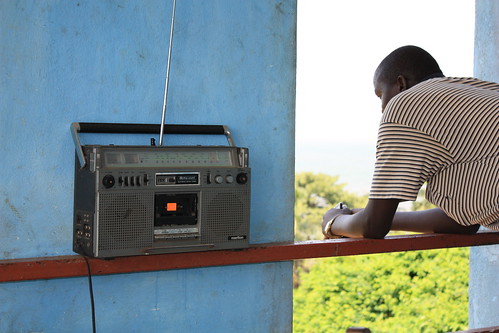How silent are your online classes and meetings? Probably not at all. We fill our synchronous meetings with talk and noise and feel awkward when no one wants to speak. But silence can help communication and stimulate reflection and has an important role to play both in the physical and digital classroom. In classroom teaching we often ask the students to work silently for a while but somehow in online sessions we feel the need to fill every moment with activity. After all the hectic online meetings and classes of the past year it's time to think more about how we can refine our online meeting skills and learn to embrace the power of silence. I've written about this theme several times in the past but it's always worth revisiting.
The simplest use of silence is to ask the class to switch off their microphones and cameras and spend a few minutes writing ideas on paper before starting a discussion. In this way all participants must try to formulate their ideas and everyone has something to say in the following discussion. For example, after such a silence they can be put into pairs in breakout groups where each person reads or explains what they have written in silence. Then they can form larger groups for a more structured task. In this way, everyone has contributed to the activity, not just those who raise their hands and are not afraid of speaking.
The concept of silent meetings has been around for some time in the business world, as explained in an article in The startup by David Gasca, The Silent Meeting Manifesto v1: Making meeting suck a little less. This was designed for on-site meetings but can apply equally well to online meetings and even in education. The idea is to start a meeting by letting the participants read a short document (3-4 pages) outlining the topic for the main discussion and spending the first half of the meeting silently reading and commenting on the document using a collaborative tool such as Google Drive or Office 365 etc. Everyone can comment and reply to comments and there is often a very high level of activity even if the room is silent except for the pitter-patter of keyboards. The moderator or teacher monitors these comments and identifies the main points to be discussed when the "noisy" part of the meeting commences. In this way everyone has actively contributed to the discussion instead of only the most vocal members. The moderator's job is not easy especially if there are lots of comments and discussion in the document so you have to follow the comments very closely and try to narrow down the points of discussion. This could of course be achieved before the meeting as part of a flipped classroom approach but as we all know it is very rare that everyone gets involved in this way and there will always be participants who turn up without having had time to prepare. This way everyone is on the same page from the start.
I have tried this in some classes asking the students to write ideas and reflections on a shared document during an online lesson and it is always a fascinating experience. No cameras or microphones but lots of writing and you see the discussion in real time as the page gets quickly covered in comments in different colours. As a teacher this gives you time to identify themes for discussion later on or misunderstandings that require explanation. Most importantly you can see that everyone is contributing, in contrast to a regular speech-based discussion. A similar approach to silent meetings in education is described in an article in the Chronicle of Higher Education, To Spark Discussion in a Zoom Class, Try a ‘Silent Meeting’. An added value of the method is that the collaborative document becomes a useful resource for the students and teacher after the class is over and the discussions and comments on the document can continue for days afterwards.
The students’ notes in the silent-meeting documents offer a transcript we could return to for guidance and inspiration as we prepared for exams, developed paper ideas, and guided future discussions. Threads in the margins of the main discussion often invited further exploration, as students noted areas of the course material that they found interesting and wanted to explore further. This record from the silent meetings was at once a set of discussion notes for students and a built-in survey for me as I sought to understand what excited students about the course.
Of course this method is not always appropriate but there are surely many other ways of using silence in online meetings. It's really about creating balance in our meetings, reducing stress and giving people space to think.


